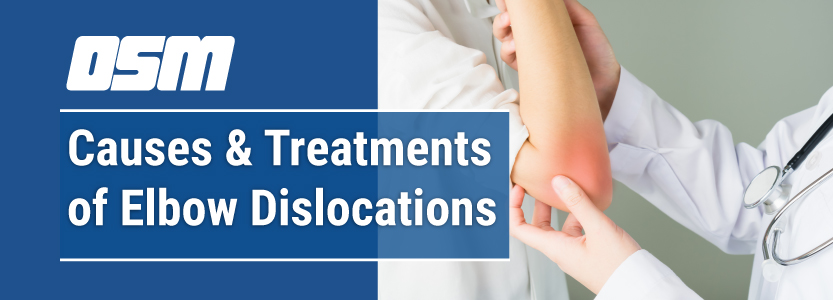Causes & Treatments of Elbow Dislocations
Article featured on OrthoInfo
When the joint surfaces of the elbow’s three bones are separated, the elbow is dislocated.
Elbow dislocations can be complete or partial, and usually occur after a trauma, such as a fall, motor vehicle collision, or other accident.
- In a complete dislocation, the joint surfaces are completely separated.
- In a partial dislocation, the joint surfaces are only partially separated. A partial dislocation is also called a subluxation.
Anatomy
Three bones come together to make up the elbow joint.
- The humerus is the bone in the upper arm.
- Two bones in the forearm, the radius and the ulna, form the lower part of the elbow.
Each of these bones has a very distinct shape.
Ligaments connected to the bones keep the elbow joint together and the bones in proper alignment.
The Orthopedic & Sports Medicine Center of Oregon is an award-winning, board-certified orthopedic group located in downtown Portland Oregon. We utilize both surgical and nonsurgical means to treat musculoskeletal trauma, spine diseases, foot and ankle conditions, sports injuries, degenerative diseases, infections, tumors and congenital disorders.
Our mission is to return our patients back to pain-free mobility and full strength as quickly and painlessly as possible using both surgical and non-surgical orthopedic procedures.
Our expert physicians provide leading-edge, comprehensive care in the diagnosis and treatment of orthopedic conditions, including total joint replacement and sports medicine. We apply the latest state-of-the-art techniques in order to return our patients to their active lifestyle.
If you’re looking for compassionate, expert orthopedic and podiatric surgeons in Portland Oregon, contact OSM today.
Phone:
Address
17355 Lower Boones Ferry Rd Suite 100A
Lake Oswego, OR 97035
Hours
Monday–Friday
8:00am – 4:30pm



